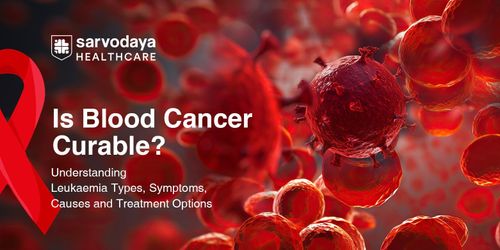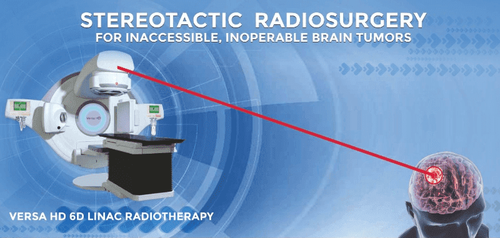The occurrence of brain tumors in India is steadily rising. Uncontrolled and abnormal cell growth in the brain is called a brain tumor. Brain tumors can be of different types, some of which are noncancerous, and some are cancerous. The noncancerous ones are called benign while the cancerous ones are called malignant. Tumors that begin to develop in the brain are called primary brain tumors, and those that begin in other parts of the body and spread to the brain are called secondary, or metastatic brain tumors. The growth of a brain tumor can vary and it depends largely on the location of the tumor along with its effect on the nervous system.
Symptoms
The symptoms of a brain tumor can vary from person to person and it often depends on the tumor’s size, location and rate of growth in an individual’s body.
However, the usual symptoms of a brain tumor include:
- Frequent and severe headaches
- Changes in usual headache pattern
- Vision problems including blurred vision, loss of peripheral vision or double vision
- Unusual nausea or vomiting
- Difficulty with maintaining body balance
- Gradual loss of sensation or movement in arms or a leg
- Speech difficulties
- Personality or behaviour changes
- Seizures
- Problem with hearing
- Unequal pupils or drooping eyelids
- Dizziness, drowsiness or loss of consciousness
Types
- Acoustic Neuromas (schwannomas): A type of benign tumor that develops on the nerves responsible for controlling balance and hearing from the inner ear to brain.
- Astrocytoma: This type of tumor develops in the glial cells, the star-shaped brain cells which are located in the cerebrum part of the brain called Astrocytes.
- Brain Metastases: When a tumor grown outside the brain spreads to brain.
- Choroid Plexus Carcinoma: A rare type of malignant brain tumor that occurs mainly in children.
- Craniopharyngiomas: A rare, noncancerous tumor that starts near the brain's pituitary gland. Growth of this tumor affects the function of the gland and other structures that exist near the brain.
- Embryonal Tumors: This type of malignant tumor starts in the fetal embryonic cells of the brain.
- Ependymoma: This type of tumor forms in the brain or spinal cord and can affect the passage where the fluid that nourishes your brain flows.
- Germ Cell Tumors: This type of tumor develops during childhood while the testicles or ovaries form and sometimes affects other parts of the body including the brain as well.
- Glioblastoma: This is the most aggressive type of tumor that starts growing within the brain and spreads rapidly, while creating pressure on the surroundings.
- Gliomas: This type of tumor begins to grow within the brain or spinal cord and may include astrocytomas, glioblastomas, ependymomas, oligoastrocytomas and oligodendrogliomas.
- Medulloblastomas: This is the most common cancerous type of brain tumor that occurs in children. It starts to grow in the lower back part of the brain and spreads through the spinal fluid.
- Meningiomas: These type of tumors are noncancerous and arise from the membranes surrounding the brain and spinal cord.
- Oligodendroglioma: This type of tumor starts developing from the oligodendrocytes of the brain or from a glial precursor cell.
- Pediatric Brain Tumors: A tumor that starts developing and growing in a child’s brain or the surrounding area.
- Pineoblastoma: A rare, aggressive type of tumor that begins growing in the pineal gland’s cells located in the center of the brain.
- Pituitary Adenomas: This is a benign tumor that develops in the pituitary gland and affects the pituitary hormones that thereby affects its function throughout the body.
Risk Factors
The reasons for a brain tumor are not yet known but there are some risk factors that can initiate it:
- Exposure to Radiation: People who are continuously exposed to radiation, called ionizing radiation are at an increased risk of developing brain tumor. Ionizing radiation is also included in radiation therapy used for cancer treatment. Such radiation exposure is also caused by atomic bombs!
- Family History of Brain Tumors: It has been seen that a small portion of brain tumors occur in people who have a history of brain tumors or who have genetic syndromes that increase the risk of developing brain tumors.
- Age and Race: The risk of getting brain tumors increases with age. Race is also a factor- Caucasians are at higher risk of developing brain tumors than Asians or Africans.
- Exposure to Chemicals: Exposure to certain harmful chemicals like coal tar volatiles, tobacco smoke, arsenic compounds, cadmium compounds etc in your living or work environment can put u at risk of developing a brain tumor.
Diagnosis
- Neurological Examination: This will include checking your hearing, balance, vision,coordination, reflexes and strength.
- Imaging: like CT-scan, MRI Brain are used to diagnose brain tumors.
- Biopsy: A tiny piece of the tumor is removed through a minimally invasive surgery and then examined whether it is benign or malignant.
Treatment For Brain Tumors
The treatment of a brain tumor depends on various factors such as its type, size and location of the tumor along with the patient’s general health condition. There are 2 primary treatment methods:
- Surgery: Usually the malignant brain tumors are treated with surgery. Surgery is done in order to remove the cancerous cells as much as possible without damaging the healthy parts. Depending on the location of tumor, a neurosurgeon decides how much of the cancer can be removed. Some of the locations allows easy and safe removal while some may be located in sensitive areas of the brain which thereby limit the amount of brain tumor removal. In case of brain tumors, partial removal is also beneficial. Brain surgery can also be combined with Radiation Therapy and Chemotherapy for better outcomes.
- Radiation Therapy: In this type of brain tumor treatment, radiation like X-rays are used to kill tumor cells.
IMRT and IGRT techniques: uses computerized algorithms to create a radiation treatment that targets the tumor and spares the normal tissue from radiation, this treatment is the standard of care in many disease sites. It is applied in brain tumors to spare the visual pathway, the brain stem and the hippocampus which is the seat of memory and in head & neck tumors to spare the salivary apparatus and the structures involved in swallowing.
-
Radiosurgery: This is a form of Radiotherapy. Stereotactic radiosurgery is not a traditional form of surgery but it uses multiple beams of radiation to kill the tumor cells located in a very small area. Under this treatment, doctors give a highly focused form of radiation treatment to the tumor cells. Not every beam of radiation is powerful, but the point where all the beams meet at the brain tumor site receives a very large dose of radiation that ultimately destroys the cancer cells, without harming or damaging the healthy surrounding tissues. Different types of technology are being used in radiosurgery for the treatment of brain tumors.
Frameless stereotactic radiosurgery (SRS & SRT): uses sharply focused radiation beams, and sophisticated planning on the Fraxion frame. This is backed by the very accurate HexaPod system along with a 6D Couch, which is used ablate intracranial targets, both malignant (i.e. recurrent gliomas, metastases) and benign.
To smoothen the recovery phase post brain tumor treatment the doctor may prescribe physical therapy, occupational therapy and speech therapy




























































